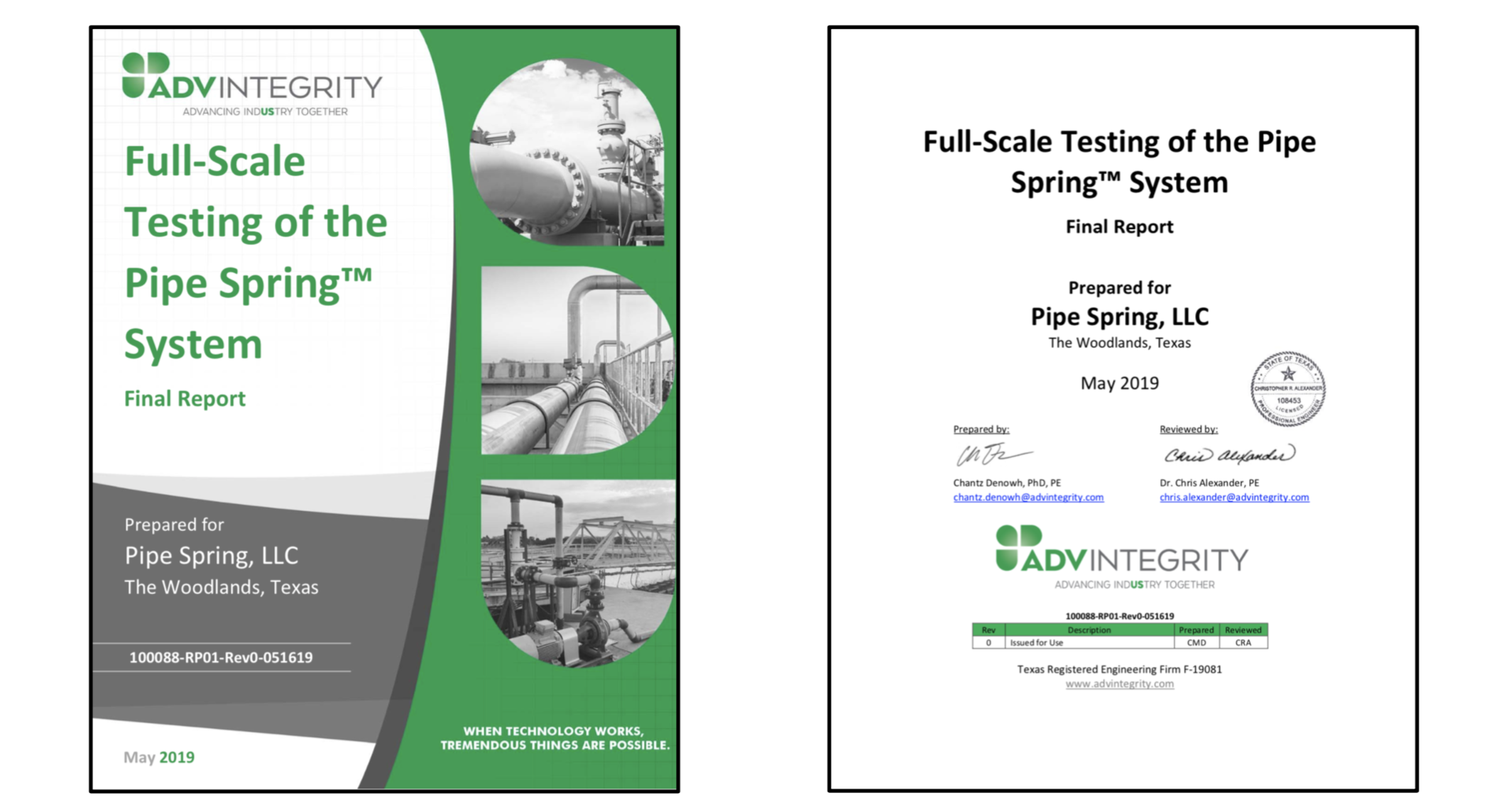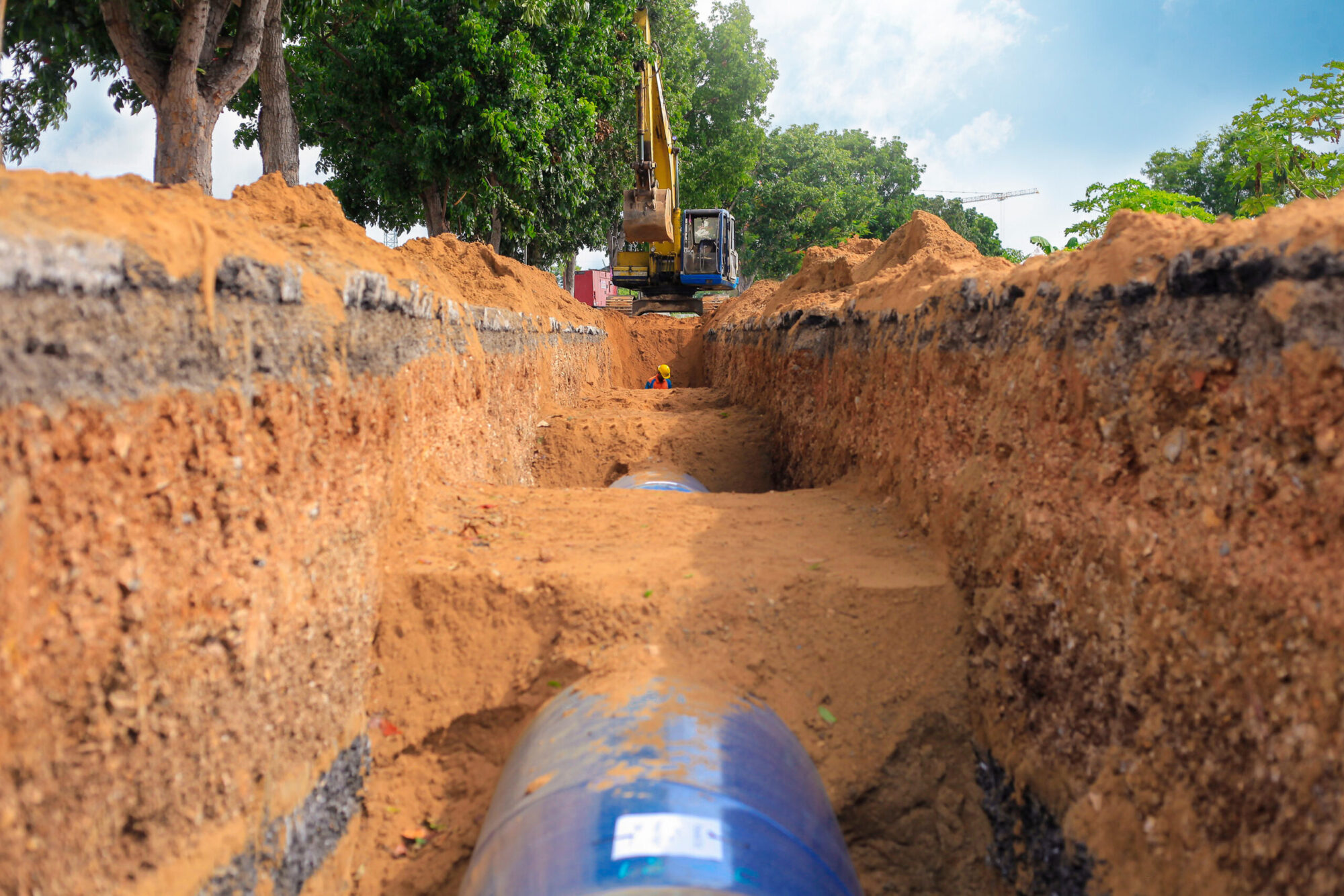
Pipe Spring LLC is pleased to announce the successful test and evaluation of the Pipe SpringTM system completed by ADV Integrity in May 2019. The technical staff of ADV Integrity are highly experienced regarding the development, testing, and performance evaluation of non-metallic repairs. They have completed several hundred tests with similar configurations. The full report is available upon request via email at info@pipespring.net or by contacting a Pipe Spring LLC representative.
“The results of this test successfully demonstrated that the Pipe SpringTM system can restore the structural integrity of a damaged pipe with a 75% wall loss corrosion defect. The Pipe SpringTM succeeded in restoring the damaged pipe past its theoretical failure pressure. The Pipe SpringTM system is not a true non‐metallic repair, but this test sample and procedure mirrors the pipe sample configuration for the ASME PCC‐2, Article 4.1, Appendix III, Short Term Spool Survival Test.”
Highlights of the program include:
- A 77% wall loss defect with an 8-inch length and 6-inch width was restored to a capacity well above the potential operating range of the pipe. The SMYS of the pipe was 2470 psi. The MAOP (72% of SMYS) was 1779 psi. The defect successfully held until 3885 psi. This represents a pressure of 218% of the MAOP and 700 psi above the yield point of the unrepaired base pipe.Typical industry assessment methods of the defect include:
-
- Theoretical contribution from the remaining thin ligament (.088 inch wall remaining) from ASME PCC-2 equation #12
- At nominal X42 = 580 psi
- At laboratory reported yield point of the steel (60.5 KSI) = 835 psi
- At the apparent base pipe yield point (56.4 KSI) = 779 psi
- ASME B31G (failure pressure)
- At X 42 nominal= 1556 psi
- At laboratory reported yield = 2242 psi
- At apparent base pipe yield = 2090 psi
- Modified ASME B31G (failure pressure)
- At nominal X42 = 1355 psi
- At laboratory reported yield = 1837 psi
- At apparent yield of base pipe = 1730 psi
- Theoretical contribution from the remaining thin ligament (.088 inch wall remaining) from ASME PCC-2 equation #12
- In addition to the standard defect geometry, a second Pipe Spring™ unit was installed on the pipe with no defect. This was done to develop data for evaluation of performance associated with strain dependent features and concerns.The highlights include:
-
- Interlayer strain gauges indicate load sharing essentially immediately as the pipe experienced internal pressure (below 100 micro strain in the base pipe).
- At MAOP, 1779 psi, the stain in the pipe under the Pipe Spring™ system was 5.5% below the stain in the unrepaired base pipe.
- At SMYS, 2470 psi, the stain in the pipe under the Pipe Spring™ system was 6.5% below the strain in the base pipe.
- At the actual yield of the unrepaired base pipe (3184 psi) the strain in the pipe under the Pipe Spring™ was reduced by 42.2 %.
- At 10,000 microstrain of the base pipe (3445 psi, 140% of SMYS) the strain in the pipe under the Pipe Spring was reduced by 80.0%
This program involved significant instrumentation. The pipe specimen had a total of 18 bi-directional strain gauges for a total of 36 channels of data. For more information please view our summary documents:
Part I - Summary of ADV Test Program
Part II - Modulus - Summary of ADV Test Program
